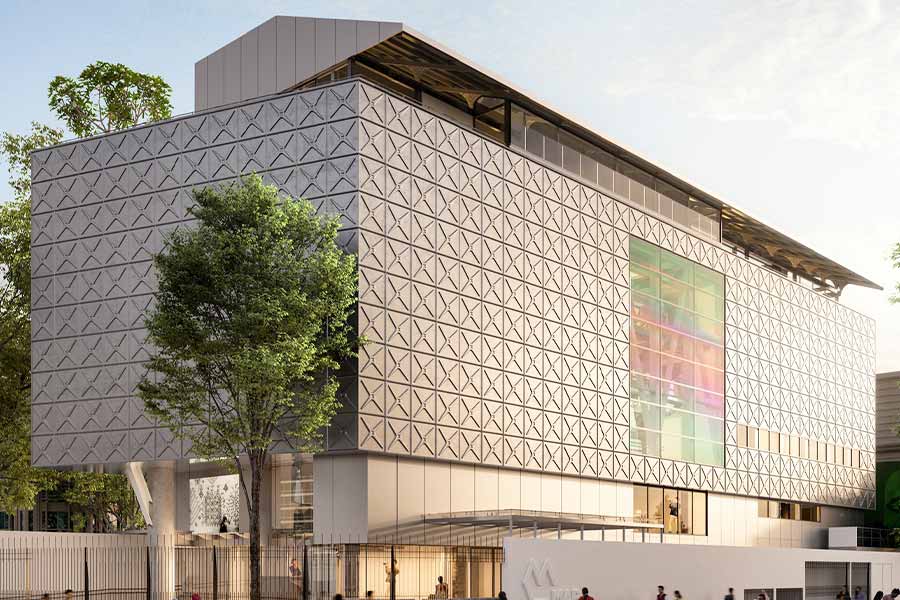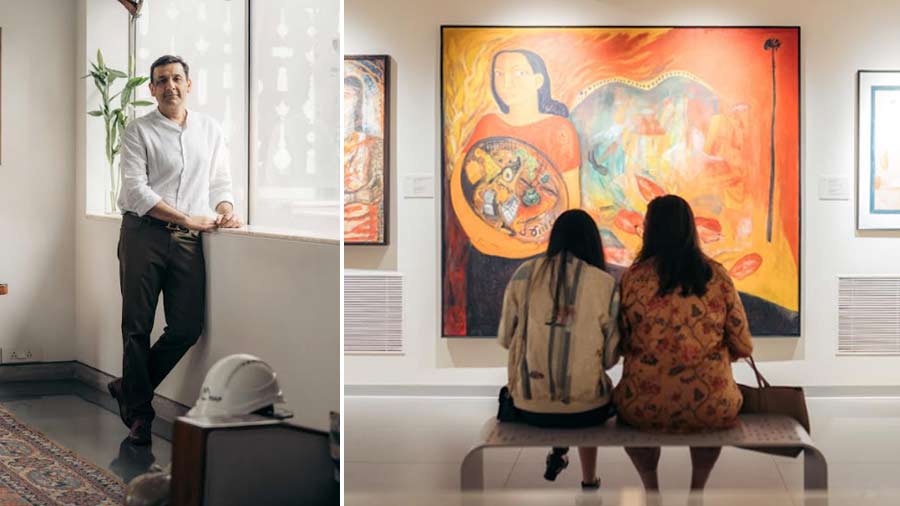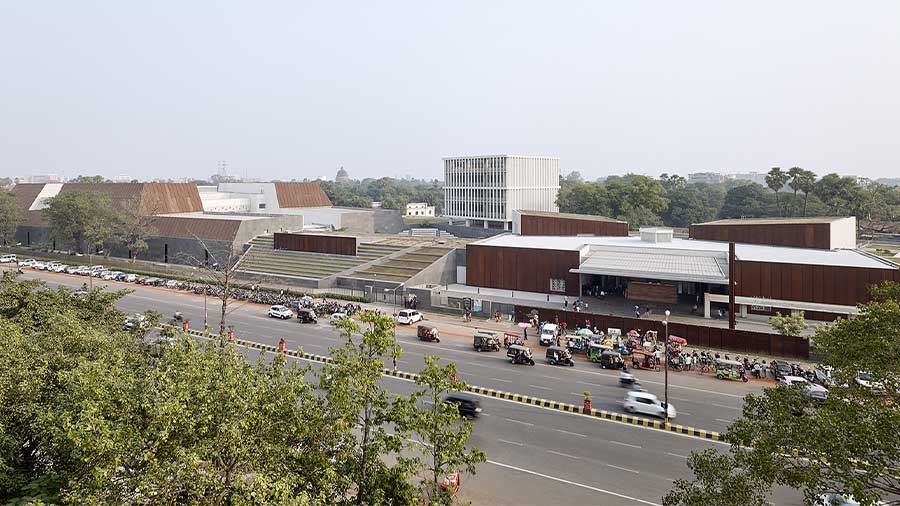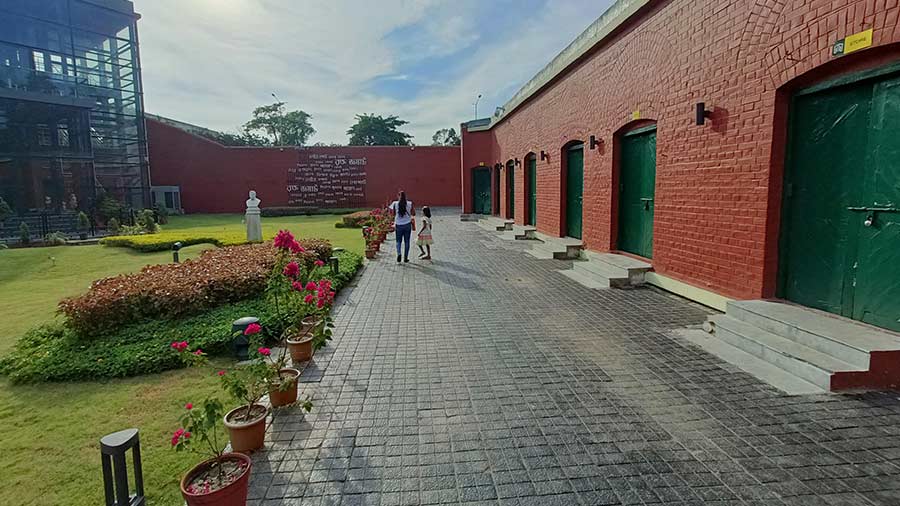A new kind of museum opened in Bengaluru last February, the Museum of Art and Photography (MAP). Sitting centre-city on Kasturba Road opposite lush Cubbon Park, the city’s vital lungs, a formidable amount of art and ways of encountering and enjoying it are packed into its relatively small size. This compact engine of dynamic activity may be a model for art museums in India, and beyond.
A year on, the museum has settled down to be a vital part of Bangalore’s cultural and educational life, both as a place to visit and a remarkable online source.
Everything about MAP is a little bit different, carefully considered, fit for today’s lifestyle. Perhaps this stems from its founder being someone outside the museum world. It is all about encouraging people, especially young people, to engage with their own culture as deeply as they wish, to be curious. ‘Curiosity’ was the only membership requirement for joining William Jones’s Asiatic Society of Bengal, which he founded in Kolkata 240 years ago, on January 15, 1784, and its importance holds true today.
The brainchild of Abhishek Poddar – industrialist, art collector, philanthropist – MAP breaks away from accepted museum patterns. “It’s rare that one gets the chance to realise a dream,” he says simply. “And if you dream in Bengaluru, surrounded by people making impossible dreams possible on a daily basis, then you seem to dream differently.” Conceived in 2011, constructing began in 2018. Poddar, a force of nature, has been its leader, its primary funder, and gave the 7,000-piece core collection – which attracted so many gifts that it grew nine-fold by opening day.
With Poddar’s professional guidance, MAP forefronts two distinct kinds of collaboration. One is led by director Kamini Sawhney and her young inspired team who fuse curating, conservation, education and technology to mutual benefit. The other is working with Bangalore’s corporate kings and benefactors around the world, so MAP can run several exhibitions and a dazzling array of complementary projects simultaneously on site, off site and online. The goal is total accessibility for all, everywhere. Indeed, impatient to get MAP going, art workshops in local schools started in 2016, the online museum sharing digital content worldwide in 2020, and MAP Academy’s online encyclopaedia and curriculum two years later.
I was there for opening day, when more than a thousand people came to have their first MAP experience. There were people of all ages including families with school-aged kids, who mostly seemed to be leading their parents and helping them use the museum. For MAP is a tool to be used, enjoyed.
I watched people pause to inspect the building that local architect Soumitro Ghosh (of Mathew & Ghosh Architects) has crafted, reusing the plot’s old railings, designing bespoke tree guards, manhole covers and benches, and sculpting the top terrace’s parapet. His overall concept is a water tank because it protects precious water in the same way an art museum protects art. “My problem was how to make the skin around the tank, the outer shell of the building, work ecologically so it would protect the art from heat and humidity,” he told me as we sit chatting on one of his granite courtyard benches. To overcome the temperature disparities of 24 degrees inside and up to 40 degrees outside, Ghosh devised a slim, stainless steel, sandwich-like panel with insulation as its filler; and to combat the noise, pollution and dust he added a dye-pressed cross. He points to the outsized window panels half way up the building, pleased that the Dichroic film finish donated by 3M makes colours sift through pink, blue and yellow as you walk past them. “We tried it, and it worked!” He laughs at the inventive craziness of it.
Soumitro is confident that Poddar will find collaborators for all his ideas for MAP, however crazy. “Abhishek has a very good record for being keenly invested in art and a good businessman. He knows how to handle funds, he is trusted. Supporters know his standards are extremely high and what he does will be original.”
In MAP’s modest lobby (no show-off double-height atrium) people stopped to look at Arik Levy’s ‘Rock Formation Tower’ made of oxidised Corten steel and his Welcome Desk for the museum, both inaugural commissions that remain in place. Some opened their Bloomberg Connects app to find out more; others clicked a QR code to add their own named temple lamp to the digital wall of flickering lights, and so played their part in making a living art work. It was a taste of what lay in store.
Close by, visitors experienced first-hand how Bengaluru’s trailblazing IT world meshes with MAP’s aims. At the big interactive touch wall, with plenty of excited chit-chat, they delved into an exploration of the collection, made their own selections, then emailed them to themselves to use in designs, study, research or just enjoy and share. Downstairs, MAP’s in-house tech team took radical IT art options further, revealing a digital hologram of a Brahmini sculpture to encourage new ways of looking closely at art.
And so, to one of the delights of the museum: the art journey up the stairs and along increasingly wide landings flooded with natural light, experiencing that rainbow created by the Dichroic film finish, getting a taste of museum’s treasures – a wooden peacock, a trio of magnificent bronze temple finials, a tribal painting. (Those who take the lift lose out.) MAP’s first visitors were snapping each other in Vogue-like poses, pinging out on Instagram.
The upper floors are the museum core. Here are the auditorium, the free-to-use library and research room. Here, too, is a terrific idea: the glass-doored conservation centre to peak through and even go in to learn more, achieved with collaborators Mazumdar-Shaw, Wipro, Tata Trusts and others. A cabinet of curiosities, supported by Jindal Stainless, operates like open storage, with cabinets and drawers to open and find surprise stimuli from the collection, perhaps a 19C print or a pen sketch. Art in the hand, to touch, out of the locked vitrine.
A high-tech gallery solves the problem of landing up at a museum only to find the objects one wants to see are not on view. MAP vsitors can pull up a previous show and enjoy it vicariously on 23 large screens, right away. Also, anyone can design an exhibition at home or in school online: just select items from the collection, mail the bespoke show to the MAP tech team, make a date, and arrive with friends to enjoy your own show displayed on the screens. Curating for all.
Then, there are the exhibitions. Rather than gallery installations that plod through a topic sequentially, director Kamini Sawhney showcases the core collection with themed selections that pose questions and often mix different media, dates and places of making. There are visiting shows, too. These all stay up for a while so locals can revisit them and the rest of us have a greater chance of seeing them. Currently, one show considering the boundaries between vintage photographs and miniature painting includes works by Alexander Gorlizki and Riyaz Uddin (closes March 24). Another displays Scottish artist Jim Lambie’s site-specific floor installation (closes July 21); a new one will look at how Meera Mukherjee and Jaidev Baghel explore their changing worlds through metal casting (March 24 - October 20).
MAP’s two biggest inaugural exhibition filled the upper floors. ‘Time & Time Again’ (now closed) was the first major exhibition of Jyoti Bhatt’s photographs, a glimpse into his archive of 1,000 prints and 60,000 negatives he gave to MAP.
‘Visible/Invisible’ (closes December 2025) poses fundamental questions about women’s role and power. Selecting 130 works from across the art spectrum, it looks perceptively at how women have been depicted in art through the centuries, whether as supposed deities or plainly objects of desire, sometimes both at once. But women are responding: a 20C Bengali kantha has Krishna leering at the distinctly annoyed gopis whose clothes he’s stolen; Nirmala Biluka’s Caged Desires watercolour (2010) poignantly depicts a woman’s longing to be free. Indu Antony’s Uncle had Hairy Legs (2017), comprising 21 prints of the legs of a man walking menacingly towards the camera, is perhaps the most powerful piece in an exceptionally powerful show.
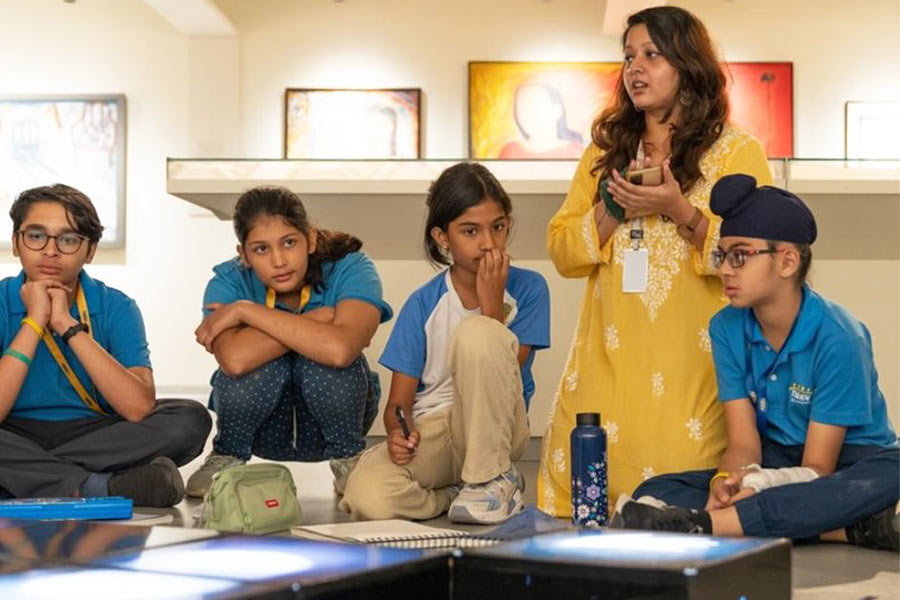
A ‘Schools at MAP’ workshop
MAP/FacebookThe museum is so much more than its already substantial collection, which it loans generously around the world. At MAP Academy, director Nathaniel Gaskell leads a formidable team building an encyclopaedia and time line of Indian art, and runs online Indian art history courses. In addition to Schools at MAP workshops, initiatives to foster art curiosity, especially in the young, range from Discover MAP downloadable art packs to Art Sparks video series for young learners. Partnerships abound, and MAP is part of Museums Without Borders and the Welcome Trust’s ‘Mindscape’ project to use art to help rural and urban people suffering mental health problems. The list grows almost weekly.
Up on the rooftop floor – where members enjoy a lounge, a restaurant and panoramic city views framed by Ayesha Singh’s Continuous Coexistences II sculpture (an inaugural commission) – Poddar laughs as he makes two admissions for his museum’s success: “shamelessly” asking for support, and encouraging his tech team to “come up with something entirely new idea every quarter”. MAP is a collaborative work-in-progress, where impossible dreams are accessible for many more people.


